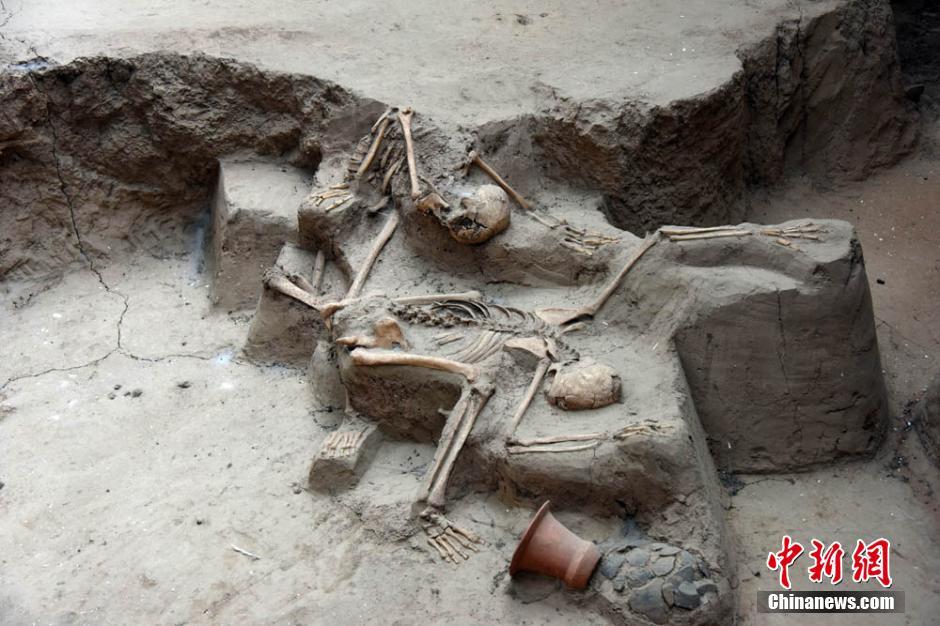Skeletal remains of a mother sheltering her child with her body during an earthquake that occurred around 4,000 years ago were recently revealed in Qinghai.

The remains were found at the Lajia site at Minhe County, preserved in their entirety after the excavation, mainland media reported.

Scholars gathered for a Chinese civilisation symposium earlier this month in Gansu, the birthplace of Qijia culture.

From there, they travelled across the Yellow River, to the site in Qinghai where the discovery had been made.

Qijia culture (BC 2200-1600) was discovered in 1924 and has since been an important focus of Chinese archaeology. It played a key role in the development of ancient Chinese civilisation, particularly around the upper reaches of the Yellow River.
